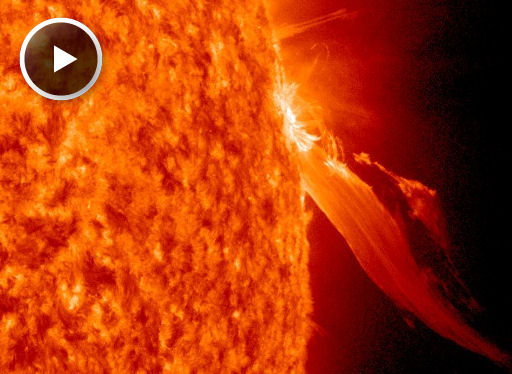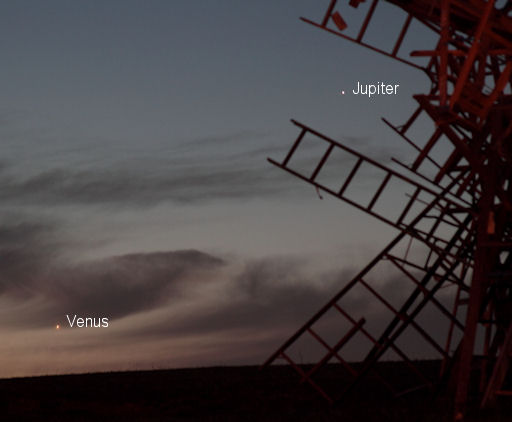They came from outer space--and you can have one! Genuine meteorites are now on sale in the Space Weather Store. | | |
FREE-FLOATING PLANETS: Astronomers have discovered a new class of planets floating alone in the dark of space. These lone worlds are probably outcasts from developing planetary systems and, moreover, they could be twice as numerous as the stars themselves. Get the full story from Science@NASA.
PARTING SHOTS: Sunspot 1208 turned away from Earth yesterday, carried over the western edge of the solar disk by the sun's 27-day rotation. En route to the farside, the active region delivered a parting shot:

NASA's Solar Dynamics Observatory recorded the eruption during the late hours of May 18th. (Watch the movie again. The limb blast appears to have triggered a sympathetic eruption near the sun's north pole. The two regions are probably connected by magnetic fields, but that's another story.) The May 18th eruption was followed by another on May 19th; both hurled CMEs into space. The clouds will sail wide of Earth, continuing the recent spell of relatively quiet space weather around our planet.
MORNING PLANETS: Wake up and smell the coffee! Or better yet, see the planets. Venus and Jupiter are beaming brightly in the eastern sky at dawn. Stephen W. Ramsden sends this photo of the view from Atlanta, Georgia:

"The recently installed Rise Up Atlanta sculpture made by Charles Brouwer from donated ladders was a perfect foreground for the planetary conjunction," says Ramsden. "I woke up early and went to Freedom Park in Atlanta to photograph the planets in their majestic peaceful rise."
Venus and Jupiter aren't alone. Clear, dark skies reveal Mars and Mercury alongside their brighter cousins. The four planets are putting on an eye-opening show every morning for the rest of the month. It's a great way to begin the day.
more images: from Bartosz T. Napierala of Perth city, WA; from Daphne Gonzalvez of Sydney, Australia; from Konstantinos Christodoulopoulos of Korinthos, Greece; from Beatrice van Eden of the SANAE base, Antarctica; from John Phillips of Upper Hutt, Wellington, New Zealand;
April 2011 Aurora Gallery
[previous Aprils: 2010, 2009, 2008, 2007, 2006, 2005, 2004, 2003, 2002]
Potentially Hazardous Asteroids (
PHAs) are space rocks larger than approximately 100m that can come closer to Earth than 0.05 AU. None of the known PHAs is on a collision course with our planet, although astronomers are finding
new ones all the time.
On May 19, 2011 there were 1224 potentially hazardous asteroids.
Notes: LD means "Lunar Distance." 1 LD = 384,401 km, the distance between Earth and the Moon. 1 LD also equals 0.00256 AU. MAG is the visual magnitude of the asteroid on the date of closest approach. | | The official U.S. government space weather bureau |
| | The first place to look for information about sundogs, pillars, rainbows and related phenomena. |
| | Researchers call it a "Hubble for the sun." SDO is the most advanced solar observatory ever. |
| | 3D views of the sun from NASA's Solar and Terrestrial Relations Observatory |
| | Realtime and archival images of the Sun from SOHO. |
| | from the NOAA Space Environment Center |
| | the underlying science of space weather |
| | for out-of-this-world printing and graphics |

